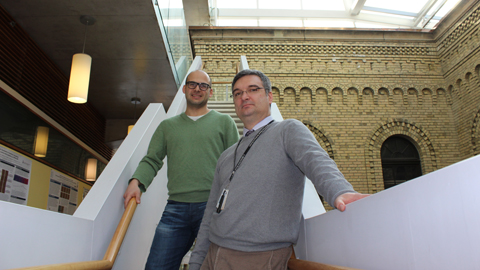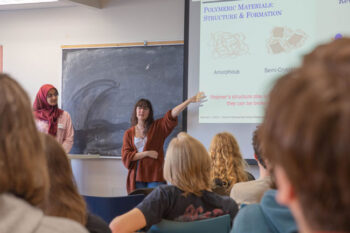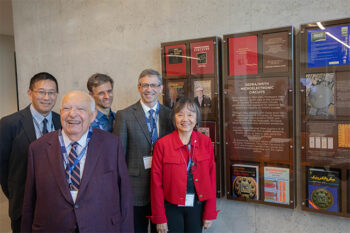Pressure sores. They’re the number one reason for infection, hospitalization and mortality amongst North America’s 2.2 million wheelchair users.
And a new sensory system developed by U of T Professor Milos Popovic (IBBME) and partner SensiMAT Systems could help eradicate them.
Although seemingly minor, even the most well treated sores can be life threatening. This is what drove Professor Popovic, Toronto Rehab Chair in Spinal Cord Injury Research at the Toronto Rehabilitation Institute (TRI), and father/son team, Michael and David Mravya of SensiMAT, to start inventing the device when they met in 2007.
“Take for example, the sad story of Christopher Reeve,” said Professor Popovic. “After his injury, Christopher Reeve and his foundation poured millions of dollars into stem cell research. But in the end, he died from a pressure sore that could have been prevented by this inexpensive solution.”
According to recent data, there are over 350,000 North Americans in wheelchairs as a result of spinal cord injuries. This segment has the highest risk of developing these ulcers, with a 95 per cent lifetime incidence rate.
Pressure sores are caused by poor circulation and increased pressure – for instance, from prolonged periods of sitting in place – where the skin and surrounding tissues become damaged. Even if a small sore is treated effectively, it still carries a high risk of infection that can lead to surgeries, hospitalization, and in some cases, death.
The SensiMAT is designed to help wheelchair users prevent these wounds from forming in the first place. The system consists of a sensor-lined mat tailored to fit a wheelchair user’s existing cushion.
Once the user sits in their chair, Bluetooth technology sends signals from the pressure-sensing mat to a smartphone app that alerts the user when and where pressure has begun to build up. It follows traffic light colours: red for trouble spots and green for pressure-free zones.
Alerts can be monitored remotely, meaning the system is also ideal for those caregivers of immobile wheelchair users. The simple and versatile design has also been sought after by occupational therapists who want to track their patients’ level of activity outside the clinical setting.
But the SensiMAT isn’t just for the most vulnerable populations.
“During our research we found that even people who are very active in their chairs and who diligently complete their pressure reliefs are at risk of developing sores,” explained Mravyan.
SensiMAT patented the technology in 2012, and they are now looking at ways to expand the sensory system for use in long-term care facilities. Rather than waiting for set rotation hours, the SensiMAT system could alert caregivers that bed-bound patients need to be moved.
“What this system offers is a quality metric for long-term care reporting,” said Mravyan. Data can also be collected over the course of weeks or even months, and could help care facilities determine the level of health and care of their clients.
The SensiMAT is currently undergoing testing at the Lyndhurst Centre, part of the Toronto Rehabilitation Institute. In March, SensiMAT Systems will launch a crowdfunding campaign to help the company bring this product to market.



